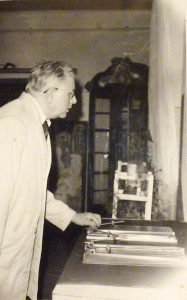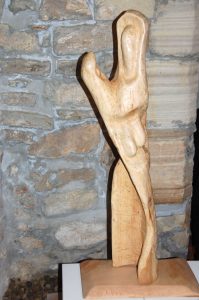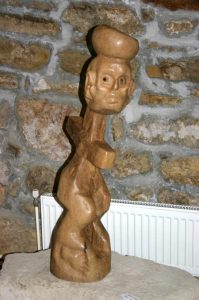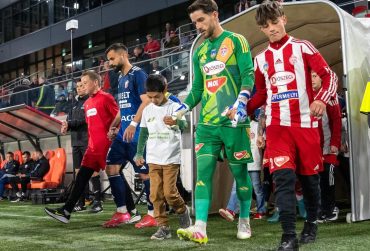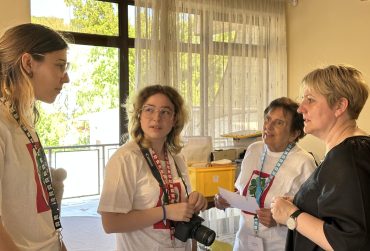Lajos Katona does not consciously declare himself a sculptor, he calls his sculptures form experimental plastics. Yet his works are much more than simple experiments. They are full of soul, love, and a captivating, archaic interpretation and understanding of life.
Born in 1941 in Szilágy County, Sarmaság. At the age of nine, he had an accident, losing his right hand and most of his sight in an explosion. By the age of eighteen he was completely blind. In 1968, he graduated from the Babes-Bolyai University in philosophy, pedagogy and history. With a teaching degree in hand, he took a job in 1968 at the High School for the Visually Impaired in Cluj-Napoca, where he taught for thirty-five years until his retirement in 2003.
At the High School, he taught mathematics for twenty-five years in grades V-VIII. In the practice of teaching geometry, he experimented for decades with the development of a drawing apparatus, and in a thesis in 1981 he summarised his practical experience. The title of the thesis was “Contributions to the development of a technology for teflography (convex drawing of the blind)”. He patented the drawing device – which can be used to teach geometry to blind people, as it allows them to draw convex, tactile plane lines – in Budapest.
He has been sculpting since 1975 and has produced more than 30 works. His sculptures have been exhibited several times in Hungary. He currently lives in Kolozsvár with his wife, Gizella Katona.
“These works were made with the aim of trying out a phenomenon in special education. I was guided in my work by the question of how forms can be produced by tactile perception alone, to the exclusion of vision, to use this technical term – how to achieve forms that can be visually interpreted. I work slowly, so my progress is very slow. I choose a large raw material, I try to realise the original, initial idea, the forms evolve as I go, but the raw material itself gives me also ideas and I work with the wood for quite a long time until the system of forms is created. You can see in the forms that there are recognisable form motifs, but there is a lot of spontaneous structure.
In many cases, the wood itself gives ideas. I usually carve the wood in a way that respects its structure. I carve along the grain. I incorporate elements into the shapes that are specifically recognizable details. These are parts of the human body, or the human as a whole. Because this form is completely accessible to me. The idea that man is the most important form is also significant. This is of interest to everyone.”
He bequeathed more than 30 works to the Foundation for the Hungarian Visually Impaired in Transylvania. The drawing apparatus, which he had experimented with for decades, was bequeathed to the Foundation, together with its designs and patent rights. We are grateful for it and will do our best to preserve and cherish it in a worthy manner. The sculptures will soon be exhibited in Székelyudvarhely.
In addition to this, Mr. Lajos Katona and his wife donated 94,000 ron as private donors to support the Hungarian School for the Blind. May God pay and keep them healthy! Thank you!

